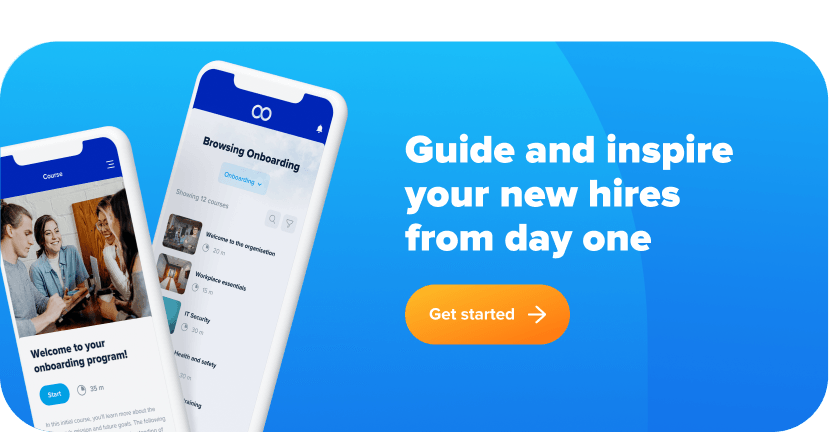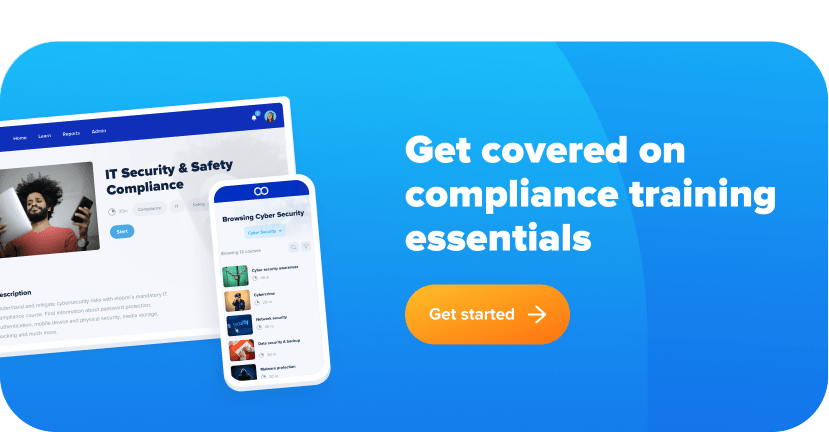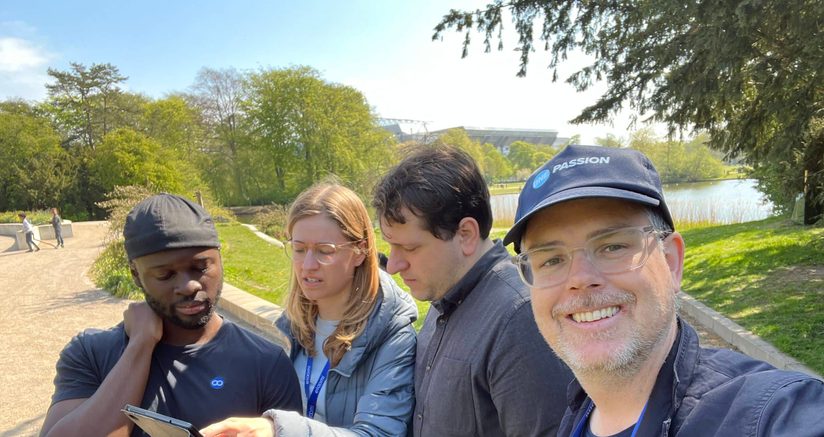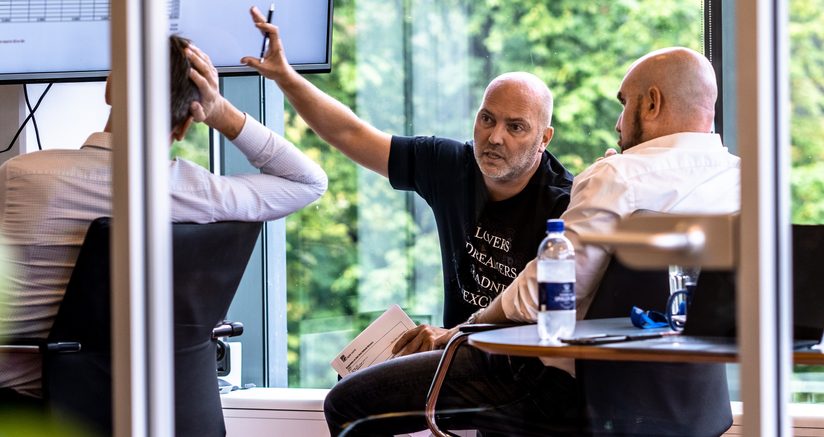HR, a world full of responsibilities
Before identifying the main HR challenges, it is best to define their day-to-day tasks and responsibilities. The first thing that comes to mind is probably hiring. However, HR is responsible for many aspects of an organisation.
Assuming HR is only about recruitment, we must keep in mind that hiring a new employee also includes processes before and after. The first step in recruiting talent is to prepare the job offer, advertise it and select candidates from the various applications and resumes. The next step is the interview (or several ones) which hopefully ends with a signed contract.
But as you know, the HR job is not finished. The HR department is also responsible for talent retention and strives to maintain employee motivation. In order to engage and encourage new talent to join the organisation, HR managers should promote diversity and individual development.
So, the question now is, which are the hot topics in HR and the most common pains?
Let’s find out in the next paragraph!
What are the main HR challenges?
The HR role has evolved into new objectives over the years. With new strategies, many businesses have figured out the power of having a defined work culture to attract future employees. In addition, being efficient and agile has led to progressive digitalisation and automation in this sector.
To get a clear picture of the modern HR function and best practices, we need to have an in-depth understanding of the key challenges this role faces over time. Interestingly, the problems are not necessarily different from the past; they have become more complicated. So, what are the problems HR faces nowadays?
The most time-consuming HR challenges fall under the following areas:
- Recruitment
- Retention
- Motivation & Development
- Culture
- Compliance
Let’s take a look at these areas to understand the specific issues and identify the ultimate solutions to support HR work. Remember, finding great talents and nurturing them is the key to success for your business!

Recruitment
That’s the first thing I can think of when we talk about HR. The person responsible for finding and selecting candidates may be an HR or People Manager, a Recruitment Manager or a Talent Acquisition Specialist.
All these different job titles have a common purpose, finding the right person for the job. It sounds a little simplistic, but it gives an idea. It is not easy to find the right co-worker with the desired soft skills, experience and personality. Regardless of the number of applications arriving at the HR office, it may be difficult to determine the needs and cultural suitability closest to the team.
The search for talented people is obviously much more specific. What makes it difficult today is the worldwide market situation. Potential applicants have a variety of needs, in particular in terms of flexibility and work culture. For example, many organisations have begun to offer remote working and learning benefits to attract young people.
The so-called millennials seek both work-life balance and career achievement. Graduates or internal students, for example, wish to climb the ladder while learning new skills and make a difference within the company. For this reason, HR managers should understand their expectations and offer sufficient space for creativity and development. On the other hand, it may be challenging to find young talents that match the specific skills required and the technical knowledge to deliver the work successfully. Another complex aspect of the hiring process involves new communication opportunities.
Posting a job announcement on the right website, finding the best tone of voice in a social media profile or choosing traditional channels (job fair, mailing list, network) requires a clear strategy beforehand. During the hiring process, be sure to communicate the benefit plans, don’t forget to mention all the details and the fun elements. Do you offer snacks or have cool Friday bars? Is training the strength of your organisation? Play your cards right. Everything counts when it comes to deciding on a new job.

Retention
If your business is experiencing frequent turnover, you should increase employee engagement and look at your industry’s payroll benchmarks. The biggest mistake for HR is to assume that the satisfaction of their employees is good simply because they do not hear their complaints.
As you are aware, it can be intimidating to share our frustration and concerns with our managers. So rather than making assumptions, it is preferable to encourage an open dialogue based on trust. The road towards retention starts here. In all cases, updating all salaries, benefits and bonus information can be challenging without a digitalised system.
That’s why HR needs to adopt smarter and more innovative communication systems. Although compensation is crucial, it is not the only reason employees remain with a company. Money cannot buy happiness, but, as I like to say, happiness can do wonders. Remember to promote a safe and positive environment where every person can get the right amount of recognition and rewards.
To build this circle of appreciation and productivity, you should also have an excellent onboarding process. If your goal is high retention, then start with the right foot. After all the hard work you’ve done to find the right talent, make sure that the person won’t look around for anything else after the ‘new job honeymoon’.
The onboarding process should provide an overview of future career opportunities within the company and a clear vision of the work culture. Like everyone else, your new employees will inevitably judge the book by the cover. A platform like eloomi can help your company to set recurrent appraisal reviews, add a gamified learning system, and enable continuous feedback.
You can easily create a modern and motivating development plan with an online learning and performance evaluation solution. This enables you to spend more time supporting employees and establishing meaningful relationships. Being data-driven will help you during difficult times and unexpected organisational changes. It’s easy to communicate news or ask your employees to adapt when they can understand or foresee the reasons for new business decisions.
Motivation
I’ll give you the best advice, get to know your employees as soon as you can. What’s this supposed to mean? It’s about figuring out their personality and how their motivation works. This will prevent misunderstandings, frustration and… turnover! How can you keep your people engaged and motivated? First, promote a positive environment in which your employees feel valued and encouraged to share new ideas or challenge team discussions.
Keep in mind that continuous feedback is vital and should be a mutual need for managers and employees. Speaking of managers, their role complements the HR effort to motivate talent with great encouragement, inspiration and career guidance. As you know, employees tend to leave managers, not companies.
Why? Because everyone needs a role model, a guide, someone who sparks their curiosity and adds a bit of pressure to do the best job, a job we can be proud of. In regard to motivation, the importance of training and development is quite obvious.
Professional mentoring requires innovative learning through e-learning modules, tailor-made courses and micro-learning. With eloomi LMS, you can get the ultimate e-learning content from world-class providers and implement significant leadership development.
Preventing a recurrent turnover doesn’t mean eliminating it. Thus, preparing young talent to face new challenges and responsibilities will strengthen the stability of your business. I am sure we all face rapid changes and unexpected promotions in our working team.
Don’t be afraid to invest in a high-quality learning system and specialised content; this will be your biggest fortune and retention strategy.

Culture
Culture is another of the duties of HR and it represents a worthy challenge. It takes time to promote and communicate the corporate culture, so it needs to be structured in a smart way. Company culture encompasses the business vision, corporate social responsibility, communication style, diversity and much more.
Above all, this is something that should be part of an employee’s routine. In other words, they should take ownership of it. It seems to be a paradox, but it is true. As a new employee, it can be difficult to understand, feel and recognise the company culture in other colleagues.
Culture also means discipline, and it is formally translated into a company’s code of conduct. In this regard, it’s essential to make new hires aware of the desired behaviour before starting the job. Online training can be an excellent idea for preventing legal or ethical issues that could lead to incidents or even something more critical. Culture also ties in with diversity. Another vital role of the company culture is the influence on performance and productivity.
When you understand and share the same culture with your colleagues, you practically speak the same language. It leads to increased effectiveness, morale and satisfaction of team members. And, of course, motivation is part of this successful outcome. Companies that have a strong, transparent business culture make HR work a little easier.
Finding the right candidate in terms of cultural suitability and differentiating the organisation from the competitors can be a significant advantage during the recruiting and hiring stages. If the company’s vision is clear from the start, HR will focus on keeping it alive and driving it through social activities and other exciting initiatives.

Compliance
Compliance shouldn’t be your nightmare. But it can be a concern if you still want to handle it in an old fashioned way. Small and medium-sized businesses need constant updates on requirements and legislation. The same approach applies to internal policies, employee rights, safety and contractual arrangements.
To make your life easier and remove all possible interpretations, you should have an excellent and modern system. An online compliance training software like eloomi guarantees your company’s full compliance with an automated notification process and renewal deadlines.
It’s common to hear the word ‘agile’ during meetings and leadership announcements; in this case, compliance can’t be effective without it. Labour legislation and regulations are constantly evolving. How can we ensure that we don’t miss updates and other details? It becomes even more critical to have an accessible digital system when it comes to health and safety requirements.
Your workforce cannot miss the most recent qualifications or awareness of the new rules. What about cybersecurity and data breach? Our working lives depend on digital devices and multiple programs that can be threatened if not used and protected correctly.
You don’t have to be an IT expert to protect your data, but you need a solid system to make all your employees responsible and reliable. Imagine having a workforce that can handle phishing emails and password security. Wouldn’t that be amazing? These rules are intended to protect both employers and employees, so don’t miss the chance to have regular compliance training and accessible digital documents.
Employee awareness can be effortless!

How to support remote workers?
Another major question is what HR should focus on in the future. Without overthinking, we can say ‘remote workers’. Following the latest office trends, it’s clear that our working life is heading towards a new dimension. This massive transformation across small and large companies calls for the help of HR as a superhero in action.
The human connection becomes complex in a virtual environment, and people can easily experience loneliness and stressful feelings. Making time for a friendly conversation is essential but not always easy. This also applies to learning activities and 1:1 dialogue between managers and employees.
Technology and intelligent systems allow us to make plans and monitor our work life with a clear overview. As previously mentioned, please don’t wait to find your employees frustrated or disengaged; help them maintain high morale despite crises or unexpected events.
Adopting a digital platform for training and performance appraisal is the best solution to engage and maintain your employees’ enthusiasm.
HR’s Dream Scenario
What could be the best working conditions to let HR grow and think strategically to support the company? In essence, reducing paperwork and time-consuming tasks will be the first step. Reporting with an intuitive online solution can modify the status quo of the HR department and offer more time dedicated to a real human connection.
Without a doubt, numbers and statistics can tell us where things are working and not. A digital system means objectivity, and that’s gold. Say goodbye to multiple interpretations, grey areas and conflictual positions. Start focusing on the right actions to take and improve productivity without common barriers such as politics and misunderstandings.






